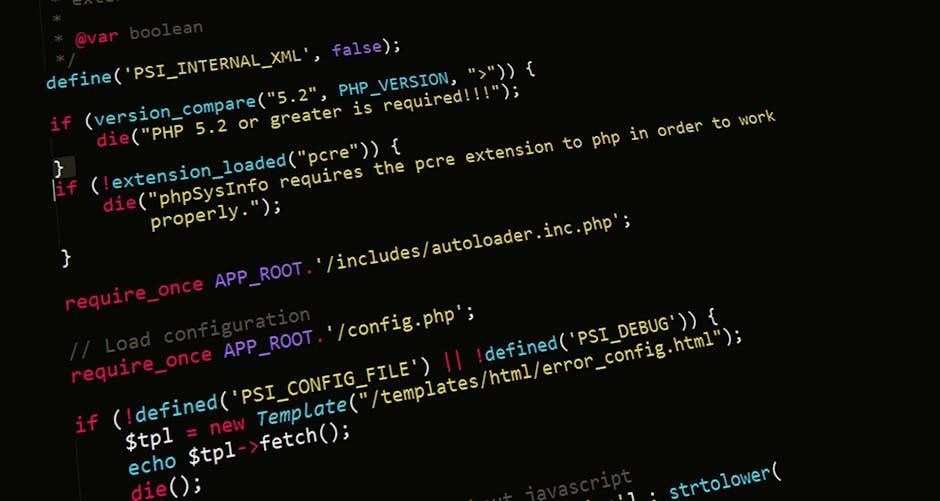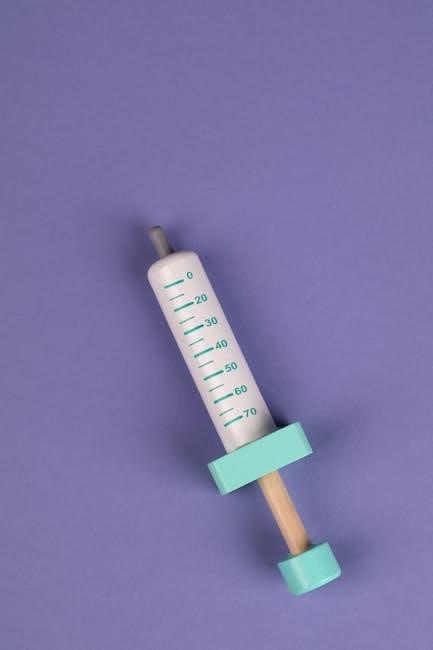Pediatric mock code scenarios are essential training tools for healthcare professionals, simulating real-life emergencies to enhance preparedness and decision-making skills in critical situations.
1.1 Importance of Mock Codes in Pediatric Care
Much like adult mock codes, pediatric mock codes play a crucial role in preparing healthcare professionals for emergencies involving children. These simulations help improve decision-making, teamwork, and adherence to protocols in high-stress situations. By replicating real-life scenarios, mock codes enhance the ability to respond effectively to pediatric emergencies, ultimately improving patient outcomes. They also foster a culture of continuous learning and improvement, ensuring that healthcare teams are well-prepared for the unique challenges of pediatric care.
1.2 Overview of Pediatric Mock Code Scenarios
Pediatric mock code scenarios are structured simulations designed to mimic emergency situations in pediatric care. These scenarios typically include cardiac arrest, respiratory distress, and shock, among others. They are tailored to address the unique physiological and anatomical characteristics of children. The goal is to provide healthcare professionals with hands-on experience, ensuring they can apply critical care skills effectively. These simulations often involve multidisciplinary teams, promoting collaboration and improving response times in real-life emergencies.

Benefits of Pediatric Mock Code Training
Pediatric mock code training enhances emergency preparedness, improves team communication, and boosts confidence in resuscitation techniques, ensuring better outcomes in critical care situations for children.
2.1 Improved Emergency Preparedness
Pediatric mock codes enhance emergency preparedness by exposing healthcare teams to realistic, high-stakes scenarios. These simulations allow practitioners to practice rapid decision-making, prioritize actions, and refine their response to critical situations. By repeatedly engaging in these drills, teams build muscle memory and improve their ability to remain calm under pressure, ensuring timely and effective interventions. This training is particularly vital in pediatrics, where conditions can deteriorate rapidly, making swift, accurate actions crucial for patient outcomes;
2.2 Enhanced Team Communication and Coordination
Pediatric mock codes foster improved team communication and coordination by simulating real-life emergencies. These scenarios require clear dialogue, role clarification, and seamless collaboration among multidisciplinary teams. Participants learn to articulate decisions effectively, delegate tasks, and respond to dynamic situations. Structured debriefing sessions further enhance these skills, allowing teams to reflect on their performance and identify areas for improvement. Enhanced communication ensures a more cohesive and responsive approach during actual pediatric emergencies, directly benefiting patient care and outcomes.
2.3 Increased Confidence in Pediatric Resuscitation

Pediatric mock codes significantly boost healthcare providers’ confidence in resuscitation by exposing them to high-stakes scenarios in a controlled environment. Participants gain hands-on experience with life-saving interventions, such as CPR and medication administration, tailored to pediatric physiology. Regular practice with realistic simulations fosters familiarity with emergency protocols and equipment, reducing hesitation during actual crises. This enhanced confidence translates to swifter, more decisive actions, ultimately improving patient outcomes in critical situations like cardiac arrest or respiratory failure.

Key Components of Pediatric Mock Code Scenarios
Key components of pediatric mock code scenarios include realistic simulations, role assignments, and medical equipment, ensuring a practical learning environment for healthcare professionals.
3.1 Realistic Simulation of Emergency Situations
Realistic simulation of emergency situations in pediatric mock codes involves creating lifelike scenarios, such as cardiac arrests or respiratory distress, using mannequins and real-time challenges. These simulations mirror actual clinical environments, helping healthcare professionals develop critical thinking and quick decision-making skills. By replicating high-stakes conditions, participants can practice effective responses, ensuring improved patient outcomes. Such realistic training enhances preparedness and confidence in handling pediatric emergencies, making it an invaluable educational tool.
3.2 Role Assignment and Team Dynamics
Role assignment and team dynamics are crucial in pediatric mock codes, ensuring each participant understands their responsibilities. Clear roles, such as team leader or medication expert, promote effective communication and coordination. These simulations foster collaboration among multidisciplinary teams, enhancing their ability to work cohesively during emergencies. By practicing teamwork, healthcare professionals improve their response to critical situations, ultimately benefiting patient care and outcomes.
3.3 Use of Medical Equipment and Supplies
The use of medical equipment and supplies in pediatric mock codes is vital for realistic training. Simulation mannequins, defibrillators, and IV supplies are often utilized to mimic real-life emergencies. These tools help healthcare professionals familiarize themselves with equipment operation and proper techniques. By incorporating authentic medical devices, mock codes enhance the accuracy of training, ensuring participants are prepared to use equipment effectively during actual pediatric emergencies.

Common Pediatric Mock Code Scenarios
This section explores frequently encountered pediatric emergency situations, such as cardiac arrest, respiratory distress, and shock, providing realistic training opportunities for healthcare professionals.
4.1 Cardiac Arrest in Children
Cardiac arrest in children is a high-stakes scenario often incorporated into pediatric mock codes. These simulations train healthcare providers to recognize signs of arrest, initiate CPR, and use defibrillation or medications appropriately. Realistic scenarios replicate the urgency of such events, emphasizing timely intervention and team coordination. Debriefing sessions help identify gaps in care, ensuring improved preparedness and competence in managing cardiac emergencies in pediatric settings. This training is critical for enhancing outcomes in real-life situations.
4.2 Respiratory Distress and Failure
Respiratory distress and failure are critical scenarios in pediatric mock codes, simulating conditions like asthma exacerbations or pneumonia. These exercises train providers to recognize signs such as tachypnea, retractions, and hypoxia. Interventions practiced include oxygen therapy, ventilation support, and medication administration. Mock codes enhance the ability to manage airway compromise and respiratory failure effectively, ensuring timely and appropriate care. These simulations improve both individual and team responses, ultimately leading to better patient outcomes in real-life emergencies.
4.3 Altered Level of Consciousness
Altered level of consciousness is a critical pediatric mock code scenario, simulating conditions like seizures, trauma, or metabolic disorders. These exercises focus on assessing causes of altered mental status, such as hypoglycemia or CNS infections. Providers practice evaluating neurological signs, managing airways, and administering appropriate therapies. Mock codes emphasize timely interventions, including glucose administration or anticonvulsant medications, to prevent further deterioration. These simulations enhance clinical decision-making and improve outcomes for children with acute neurological compromise.
4.4 Shock and Hypotension
Shock and hypotension scenarios in pediatric mock codes simulate conditions like sepsis, dehydration, or bleeding. These exercises train healthcare providers to recognize early signs of shock, including tachycardia and poor perfusion. Participants practice fluid resuscitation, vasopressor administration, and addressing underlying causes. Mock codes emphasize timely intervention to prevent organ failure. These simulations improve recognition and management of shock states, ensuring better outcomes for critically ill children through enhanced clinical skills and teamwork.

Developing Effective Mock Code Scenarios
Creating realistic and engaging mock code scenarios involves clear objectives, realistic patient cases, and debriefing sessions to enhance learning and improve clinical decision-making skills effectively.
5.1 Identifying Learning Objectives
Identifying clear learning objectives is crucial for effective mock code scenarios. These objectives should focus on improving clinical skills, decision-making, and teamwork. They should align with the specific needs of pediatric care, such as recognizing signs of cardiac arrest or managing respiratory distress. By defining these goals, educators can create targeted simulations that enhance preparedness and competence in real-life emergencies, ensuring participants gain practical experience and confidence in pediatric resuscitation.
5.2 Creating Realistic Case Studies
Realistic case studies are vital for effective mock code training. They should mimic real-life pediatric emergencies, such as cardiac arrest or respiratory failure, incorporating detailed patient histories and clinical data. These scenarios should progress dynamically, reflecting how a child’s condition might deteriorate or improve. The use of simulation mannequins and realistic equipment enhances the immersive experience, helping participants develop critical thinking and problem-solving skills in high-stress situations, ultimately improving patient outcomes.
5.3 Incorporating Debriefing Sessions
Debriefing sessions are crucial for maximizing learning in pediatric mock codes. These discussions allow participants to reflect on their actions, decision-making, and communication. Facilitators provide constructive feedback, highlighting strengths and areas for improvement. Video playback of the scenario can enhance review, enabling teams to analyze their performance. Debriefings also foster a culture of transparency and continuous improvement, ensuring that lessons learned are applied in real-life emergencies, ultimately enhancing patient care and team effectiveness.

Tools and Resources for Pediatric Mock Codes
Essential tools include pediatric mock code scenario PDFs, simulation mannequins, and online platforms, enhancing realistic training and improving emergency response skills effectively.
6.1 Pediatric Mock Code Scenarios PDF
Pediatric mock code scenarios in PDF format provide detailed, realistic case studies and checklists for training healthcare professionals. These resources often include diverse emergency situations, such as cardiac arrest, respiratory distress, and shock, with step-by-step guides for assessment and intervention. Many PDFs also incorporate debriefing templates to facilitate post-scenario discussions, ensuring learners reflect on their performance and identify areas for improvement. They serve as invaluable tools for standardizing mock code training and enhancing clinical preparedness in pediatric care settings.
6.2 Simulation Mannequins and Equipment
Simulation mannequins and equipment are critical tools in pediatric mock code training, offering realistic and interactive learning experiences. High-fidelity mannequins can mimic pediatric vital signs, allowing participants to practice CPR, airway management, and defibrillation in lifelike scenarios. These devices often include programmable features to simulate various conditions, such as arrhythmias or respiratory distress. Their use enhances hands-on training, enabling healthcare professionals to refine their technical and decision-making skills in a risk-free environment, ultimately improving emergency preparedness and patient outcomes.
6.3 Online Platforms for Scenario Development
Online platforms provide accessible tools for creating and sharing pediatric mock code scenarios, fostering collaborative learning and standardized training. These platforms often feature customizable templates, allowing educators to design scenarios tailored to specific learning objectives. Resources like PDF guides and simulation software enable realistic case development, while virtual libraries offer pre-designed scenarios for various emergencies. Such platforms promote consistency and innovation in training, ensuring healthcare professionals can effectively prepare for diverse pediatric emergencies.

Challenges in Conducting Pediatric Mock Codes
Conducting pediatric mock codes faces challenges like limited resources, ensuring scenario realism, and engaging multidisciplinary teams effectively, which can hinder training quality and outcomes.
7.1 Limited Time and Resources
Many institutions face challenges due to limited time and resources, making it difficult to organize frequent and effective pediatric mock code training sessions. These constraints often result in inadequate practice opportunities for healthcare providers, which can impact their preparedness for real-life emergencies. Additionally, the cost of simulation equipment and the availability of trained facilitators further exacerbate these challenges, creating barriers to implementing comprehensive mock code programs.
7.2 Ensuring Realism and Relevance
Ensuring realism and relevance in pediatric mock code scenarios is crucial for effective training. Realistic simulations help healthcare providers develop practical skills and decision-making abilities. Case studies and clinical scenarios based on real-life emergencies are essential. Regular updates to scenarios ensure they remain relevant to current medical practices. Incorporating diverse and complex cases helps prepare teams for a wide range of situations. This approach enhances learning and improves the ability to handle emergencies confidently and effectively.
7.3 Engaging Multidisciplinary Teams
Engaging multidisciplinary teams is vital for effective pediatric mock code training. These teams, comprising nurses, physicians, and respiratory therapists, simulate real-life emergency responses. Collaborative training enhances communication and coordination, ensuring cohesive actions during crises. Active participation from all roles fosters a realistic environment, improving problem-solving and decision-making skills. This approach strengthens teamwork and prepares healthcare providers to manage complex pediatric emergencies effectively, ultimately improving patient outcomes through unified and efficient care delivery.

Evaluating the Effectiveness of Mock Code Training
Evaluating mock code training involves assessing individual and team performance, incorporating feedback mechanisms, and measuring knowledge retention to ensure improved preparedness and skill application in real emergencies.
8.1 Assessing Individual and Team Performance
Assessment of individual and team performance during pediatric mock codes involves evaluating adherence to protocols, decision-making, and communication. Observers use standardized checklists to rate technical skills, such as CPR quality and medication administration, while also assessing teamwork dynamics. Feedback is provided to identify strengths and areas for improvement, ensuring that participants can apply learned skills effectively in real-life emergencies. This structured evaluation helps in refining training programs and enhancing overall preparedness for pediatric resuscitation scenarios.
8.2 Feedback Mechanisms for Improvement
Structured debriefing sessions are crucial for providing constructive feedback after pediatric mock codes. Facilitators use observation checklists and participant surveys to identify gaps in performance. Feedback focuses on clinical decisions, communication, and teamwork, with actionable recommendations for improvement. For example, BC Children’s Hospital incorporates video-recorded scenarios to enhance learning. This iterative process ensures that participants refine their skills and adapt to real-life challenges, ultimately improving emergency preparedness and patient care outcomes in pediatric settings.
8.3 Measuring Knowledge Retention
Evaluating knowledge retention after pediatric mock codes involves assessing long-term understanding and application of skills. Follow-up tests, scenario-based quizzes, and real-time observations during future simulations are common methods. Studies show that repeated participation in mock codes improves recall of critical steps in emergencies. For instance, residents who engage in regular mock code training demonstrate better retention of algorithms for conditions like SVT and VFib, ensuring sustained competence in pediatric resuscitation over time.

Future of Pediatric Mock Code Scenarios
The future of pediatric mock code scenarios lies in integrating advanced technologies, such as AI and VR, to create immersive training experiences, ensuring standardized and accessible education globally.
9.1 Integration of Advanced Simulation Technologies
The integration of advanced simulation technologies, such as virtual reality (VR) and artificial intelligence (AI), is revolutionizing pediatric mock code training. These tools create highly realistic and immersive environments, allowing healthcare providers to practice complex scenarios in a risk-free setting. VR headsets and AI-driven mannequins can simulate lifelike patient responses, enhancing the realism of training sessions. Additionally, interactive PDF scenarios and online platforms enable easy access to customizable training materials, fostering continuous learning and improvement in pediatric emergency care.
These technologies also facilitate personalized learning experiences, adapting to the skill level and needs of participants. By leveraging cutting-edge innovations, pediatric mock code scenarios are becoming more dynamic, effective, and accessible, ensuring better preparedness for real-world emergencies.
9.2 Expanding Scenarios to Rare Pediatric Conditions
Expanding pediatric mock code scenarios to include rare conditions enhances preparedness for uncommon yet critical cases, such as congenital heart defects or thrombotic complications; These scenarios mimic real-life challenges, allowing healthcare providers to practice diagnosing and managing conditions they may rarely encounter. By incorporating such cases, training programs ensure a broader skill set and improved decision-making under pressure.
This approach also fosters a culture of readiness, enabling teams to handle unexpected situations with confidence and precision, ultimately improving patient outcomes in rare and high-stakes emergencies.
9.3 Global Standardization of Training Programs
Global standardization of pediatric mock code training ensures consistency in education worldwide, aligning programs with best practices. This uniformity enables healthcare professionals to collaborate effectively across borders, sharing knowledge and improving outcomes. Standardized scenarios and evaluation metrics help bridge gaps in training quality, ensuring all participants achieve comparable proficiency levels. By adopting universal guidelines, the global medical community can enhance emergency preparedness and deliver consistent, high-quality care for pediatric patients everywhere.
Pediatric mock code scenarios are vital for enhancing emergency preparedness and improving patient outcomes. They provide realistic training, fostering teamwork and confidence among healthcare professionals.
10.1 Summary of Key Points
Pediatric mock code scenarios are crucial for improving emergency preparedness, enhancing teamwork, and boosting confidence in healthcare professionals. These simulations replicate real-life situations, enabling staff to practice and refine critical skills. Regular training ensures better patient outcomes and fosters a culture of continuous improvement. By addressing diverse emergency cases, mock codes help bridge gaps in knowledge and coordination. Their effectiveness lies in realistic setups, debriefing sessions, and multidisciplinary collaboration, making them indispensable in modern pediatric care.
10;2 Final Thoughts on the Importance of Mock Codes
Pediatric mock codes are indispensable in modern healthcare, offering a lifelike environment to refine emergency response skills. These simulations foster teamwork, improve decision-making, and enhance confidence among professionals. By replicating high-stakes scenarios, mock codes ensure better preparedness for real emergencies, ultimately improving patient outcomes. Investing in these training programs is crucial for maintaining high standards of care and equipping healthcare providers with the skills needed to handle critical situations effectively. Their continued use will remain vital in advancing pediatric emergency medicine.



